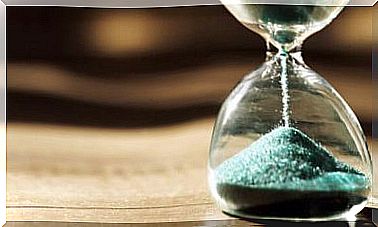Rathus’ Confidence Form

The Rathus Assertiveness Schedule, or Rathus’ self-confidence scheme as we can call it in Norwegian, developed by Dr. Spencer A. Rathus, is a test for measuring self-confidence. As a social skill, self-confidence is fundamental to our well-being. Knowing how to express feelings and needs, as well as defending your interests and rights, can strengthen both your relationships with other people and your own self-esteem. Although not everyone is born confident, it is actually a skill we can develop.
There are a number of tips and advice on how to improve this skill, and in this article we will introduce you to some of them. Self-confidence can, among other things, reduce violent behavior in people. In addition, it improves our self-esteem, our values and the confidence we have in ourselves. Without a satisfactory level of self-confidence, people spend more time developing the above qualities.

Rathus’ confidence form
Rathus’ self-assurance form is still considered to be both relevant and useful. Some people see themselves as very confident, but this is sometimes confused with aggression. This test can help distinguish between aggression and self-confidence. In addition, this form also serves as a training guide.
What does it measure?
Rathus’ confidence form measures the following:
- A person’s self-confidence.
- Whether the person in question usually defends his rights, ideas and needs.
- Whether a person is passive or aggressive.
- The information you get from this test will help you figure out which areas you should continue working on. For example, a person may have scored low on self-confidence due to social anxiety.

What are the questions in the test?
Rathus’ form consists of 30 questions with 6 possible answers, from “very typical of me” to “very atypical of me”. The questions, reproduced from the 1973 edition of the Rathus Assertiveness Schedule , are as follows:
- Most people seem to be more aggressive and confident than I am.
- I have hesitated to accept or even make invitations because I am shy.
- When I order food at a restaurant and am dissatisfied with what I get served, I complain to the waitress.
- I try to avoid hurting other people’s feelings, even though I myself feel that I have been treated badly.
- If a seller makes an effort to show me an item that I do not really want or need, I have a hard time saying “no”.
- When I am asked to do something, I insist on knowing why.
- Sometimes I’m looking for a good, uplifting quarrel.
- I strive to get ahead like most others in my position.
- To be completely honest, people exploit me quite often.
- I like to start conversations with new acquaintances or strangers.
- I usually do not know what to say to people I am attracted to.
- I often hesitate to call institutions and foundations.
- I prefer to write job applications or college applications instead of going through a face-to-face interview.
- I find it embarrassing to return an item.
The last 15 questions
- If a respected and close relative annoys me, I would rather suppress my feelings than express my irritation.
- I have failed to ask questions because I have been afraid of sounding stupid.
- During quarrels or intense discussions, I sometimes get scared that I will get so angry that I start shivering all over.
- If a famous lecturer makes a comment I do not think is correct, I think it is important that the audience also hears my opinion.
- I avoid price discussions with salespeople and office staff.
- When I have done something important or useful, I make sure that others know about it.
- I am open and honest about my feelings.
- If anyone has spread false rumors or stories about me, I try to meet that person as soon as possible to “talk” about it.
- I have a hard time saying “no”.
- I tend to hold back my emotions instead of starting a scene.
- I complain about poor service at restaurants and elsewhere.
- When I get a compliment, I often do not know what to say.
- If a couple sitting near me at the theater or a lecture is talking loudly, I ask them to calm down or to take the conversation somewhere else.
- Anyone trying to push past me in a queue should prepare for a good match.
- I am quick to express my opinions.
- There are situations where I simply do not get to say anything.

The evaluation of Rathus’ self-confidence form
In order to evaluate this form, those who complete the test know that there are both positive and negative answers. The sum of the points for each answer gives you a number. Based on this number, you will know your percentage of self-confidence. Thus, you will also be able to see whether you are considered to be very little confident, a little confident, confident or aggressive.
After this, your psychiatrist will be able to explain to you what aspects you should work on, what tools you should use and how you can best use them to improve your needs.
To summarize, we can say that self-confidence can be both learned and improved. It’s about dealing with your insecurities and social anxiety, about setting boundaries and relating to others in a more confident way.









